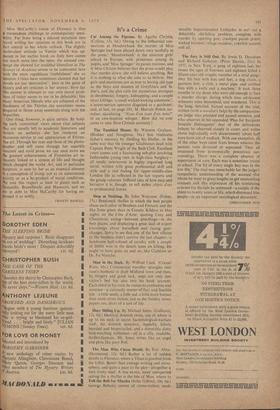The Jury is Still Out. By Irwin D. Davidson and
Richard Gehman. (Peter Davies, 21s.) In 1957, in New York, a gang of eighteen lads be- tween the ages of fourteen and eighteen killed a fifteen-year-old cripple, member of a rival gang: they 'hit him with fists and feet, a dog chain, a garrison belt, a club, a metal pipe, and stabbed him with a knife and a machete.' It took three months to try those who were old enough to face a murder charge, during which time adolescent witnesses were threatened, and murdered. This is the long, detailed, factual account of the trial, written (w ith a novelist's help) by the compassion- ate judge who presided and passed sentence, and who observes in his appended 'Plan for Incipient Juvenile Delinquents' that of the defendants (whom he observed closely in court, and writes about individually with discernment) 'about half were born out of wedlock. With one exception, all of the other boys came from homes wherein the parents were divorced or separated. They all emanated from economically precarious sur- roundings. There was a complete absence of supervision or care. Each was a notorious truant at school. The IQ of every single boy was in the low 80s.' The trial was remarkable for the judge's sympathetic understanding of the accused (for whom he went to great lengths to get outstanding counsel) and this expression of his continuing concern for the lads he sentenced—a couple of the eldest to twenty years or life, which distressed him deeply—is an important sociological document.
CHRISTOPHER PYM






































 Previous page
Previous page